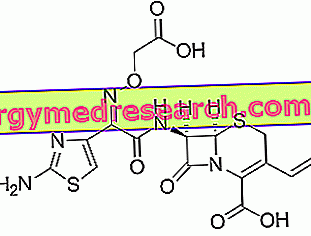Located in the abdominal cavity on the sides of the last thoracic vertebrae and the first lumbar, the kidneys are two dark red, bean-shaped organs, symmetrical, about 10 cm long, 7 wide, 3 or 4 cm thick and with a unit weight of about 150 grams. Each kidney receives large amounts of blood from the renal artery (branch of the aorta) and, after having filtered it, spills it into the renal vein that flows into the vena cava.

Thanks to all these functions, the kidneys are essential organs for the survival of the individual; for this reason patients with severe kidney diseases are forced to undergo periodically a medical blood purification procedure, called dialysis. Many people, on the other hand, normally live with a single kidney, since this organ has a large functional reserve.

The functional unit of the kidney is the nephron, a microscopic tubule capable of performing all the functions of the organ and capable, as such, of filtering blood and collecting the filtrate that will give rise to urine. The final product of filtration flows into the renal pelvis and then, through a small tube called a ureter, into the bladder, where it accumulates before being excreted through the urethra.

After passing from the afferent arteriole to the glomerulus, the blood flows into another vessel, called the efferent arteriola . Unlike what happens in the rest of the bloodstream, the renal capillaries give rise to arterioles and not to venules, since in the glomerulus there is no passage from arterial blood to venous blood, but a simple "sieving".
Outside the glomerulus, the filtered blood is collected in a structure called Bowman's capsule, from which originates a contiguous series of tubules, called, in order, proximal convoluted tubule, Henle's loop and distal convoluted tubule, for an overall length of 5 centimeters.
More distal tubules coming from different nephrons flow into the collecting tubule, at the end of which the urine is collected.

The functions of the kidney are essentially two: the regulation of the concentration of water and solutes and the elimination of useless or harmful substances (drugs and final products of the metabolism such as urea, uric acid and excess of H + ions); the most important is undoubtedly the first, since the alteration of the blood volume or ionic levels can cause serious pathologies even before the accumulation of metabolic waste produces its effects.
The fundamental processes that take place in the nephron are three, since each of them is able to filter, reabsorb and secrete independently.
FILTRATION: occurs between glomerular capillaries and Bowman's capsule. To perform this function, during the day the kidneys filter an enormous quantity of plasma (about 180 liters), to then perform a selective reabsorption of the substances that must not be eliminated.
Due to their excessive size, the cells do not pass through the filtrate, so red blood cells, white blood cells and platelets are not present; the passage of larger proteins is also prevented. The filtrate thus assumes the same composition as the plasma (liquid part of the blood) deprived of proteins with a greater molecule, since only the smallest and modest amounts of albumin are able to pass into the filtrate.
When the preurine leaves the Bowman's capsule it undergoes changes through reabsorption and secretion processes.
ABSORPTION: it consists in the recovery of filtered water and solutes, which pass from the tubules to the blood capillaries. The reabsorbed quantity is therefore given by the water plus the substances that leave the preurine and return to the bloodstream. These include all useful products for the body, such as glucose, the smallest proteins that have managed to pass into the filtrate, amino acids, vitamins, a very large amount of water and various salts.
SECRETION: process, inverse to resorption, whereby some substances pass from the blood contained in the capillaries to the renal tubules, adding to the filtered ones. Among the secreted substances are all those that need rapid elimination, such as drugs, H + ions and excess molecules.
EXTRACTION: consists in the elimination of urine in the renal pelvis. The volume excreted is equivalent to the filtered volume minus that reabsorbed plus the secreted one. In the case of glucose, being the resorption equal to 100% and the secretion null, the excretion is equal to zero. Water and mineral salts are partly reabsorbed and partly excreted, thanks to a fine regulatory mechanism.
About 700 ml of plasma pass through the kidneys in one minute, of which 125 are filtered for a total daily of 180 liters of preurine. Of this impressive volume less than one percent is excreted (about 1.5 liters a day), while the remainder is rapidly reabsorbed. Our body performs all this work, apparently useless, in order to quickly eliminate any excesses or harmful substances. Thanks to the large volume of liquid that passes through them, the kidneys can actively intervene to adjust the various concentrations and eliminate all that is not needed.
FILTRATE = protein-free plasma
REASSORBIT = useful substances such as glucose, amino acids, water, vitamins, and minerals
SECRETO = excess substances, end products of catabolism (for example urea) or drugs
ESCRETO = FILTRATO + SECRETO - REASSORBED
Where are the kidneys?
Where are the kidneys
Where the kidneys are located is a common question, the answer to which is:
- In the abdomen, posteriorly to the peritoneum ( retro-peritoneal cavity ) and to important organs such as intestine, spleen, pancreas and liver;
- One on the right (right kidney) and one on the left (left kidney) of the spinal column (or spine ) between the XII thoracic vertebra (T12 vertebra) and the III lumbar vertebra (L3 lumbar vertebra);

- Immediately below the adrenal glands (there are two adrenals, one on each side, so there is an adrenal above the right kidney and an adrenal above the left kidney);
- Covered by the last ribs of the thoracic cage, laterally and partly posteriorly, and by the intermediate-lumbar muscles of the back, posteriorly.
Where are the kidneys: difference between the right kidney and the left kidney
The kidneys are in a slightly different position from one another; the right kidney, in fact, resides lower than the left kidney, as it must leave room for the liver, which is a voluminous organ.
The difference in position between the right kidney and the left kidney means that the relationship between these two organs with the spine is different: if for the left kidney the union with the spine goes from the vertebra T12 to the vertebra L2 including, for the kidney right, on the other hand, the interaction with the load-bearing axis of the human body is long from the vertebra L1 to the vertebra L3 included .
It is curious to point out to the readers that the vertical extension of each kidney is always equal to 3 vertebrae (for the left kidney, the T12 vertebra, the L1 vertebra and the L2 vertebrae; for the right kidney, the L1 vertebrae, the vertebra L2 and the vertebra L3).
Where are the kidneys in the abdomen
To understand: brief review of the regions of the abdomen
Imagining to design a 3x3 square grid (like the tris, the popular game), the abdomen of the human being can be divided into 9 regions . Proceeding (from the observer's point of view) from left to right and from top to bottom, these 9 subdivision regions of the abdomen are:
- The right hypochondrium, the epigastrium and the left hypochondrium, for the first of the 3 rows of the grid;
- The right lumbar region, the umbilical region and the left lumbar region, for the second of the 3 rows of the grid;
- Finally, the right iliac fossa, the hypogastrium and the left iliac fossa, for the third of the 3 rows of the grid.
Important to avoid confusion: the right hypochondrium, the right lumbar region and the right iliac fossa are to the left of the observer of an abdomen, therefore they reside to the right of the latter.
Conversely, the left hypochondrium, the left lumbar region and the left iliac fossa are to the right of the observer of an abdomen, therefore they are located to the left of the latter.
Reasoning on the regions of the abdomen just summarized, the precise answer to the question where the kidneys are in the abdomen is:
- As for the right kidney, between the right hypochondrium and the right lumbar region;
- As for the left kidney, however, between the left hypochondrium and the left lumbar region.

Readers should be reminded that, due to the slight difference in position between the two kidneys, the right kidney occupies the right abdominal and right lumbar abdominal regions differently from how the left kidney occupies the left abdominal and left lumbar abdominal regions; the first, in fact, is displaced towards the right lumbar region more than the second is, with respect to the left lumbar region.
Where are the kidneys compared to the peritoneum
Unlike all the other organs of the abdomen, the kidneys are external to the peritoneum, to be precise located in a posterior position with respect to the latter ( retro-peritoneal region or retro-peritoneal cavity).
The peritoneum is the serous membrane that surrounds most of the abdominal organs and acts as a lining of the abdominal and pelvic cavity.
Being in the retro-peritoneal region, the kidneys are also referred to as retro-peritoneal organs or organs of the retro-peritoneal region .
Where are the kidneys compared to other abdominal organs

To the question where the kidneys are compared to the other abdominal organs (so with which organs confine the kidneys) it is possible to respond as follows:
- The right kidney borders:
- The right adrenal superiorly;
- The liver, the tract of intestine called the duodenum and the right flexure of the colon (where the colon from ascending becomes transverse), anteriorly;
- The diaphragm, the 12th rib on the right, the large psoas muscles on the right, the square of the right lumbar and the right abdominal transverse, and the right subcostal nerves, the right ileoipogastric and the right ileoinguinal, posterior.
- The left kidney, instead, borders:
- The left adrenal superiorly;
- The spleen, the stomach, the pancreas, the left flexure of the colon (where the transverse colon becomes descending) and the intestine called fasting, anteriorly;
- The diaphragm, the XI and the XII left rib, the large psoas muscles of the left, the square of the left lumbar and the abdominal left transverse, and the left subcostal nerves, left ileogogastric and left ileoinguinal, posterior.
Readers will have noticed that the right kidney comes into contact with only one rib of the thoracic cage (the last), while the left kidney with two (the two endings); the reason for this is, once again, the slight difference in position between the two kidneys.



